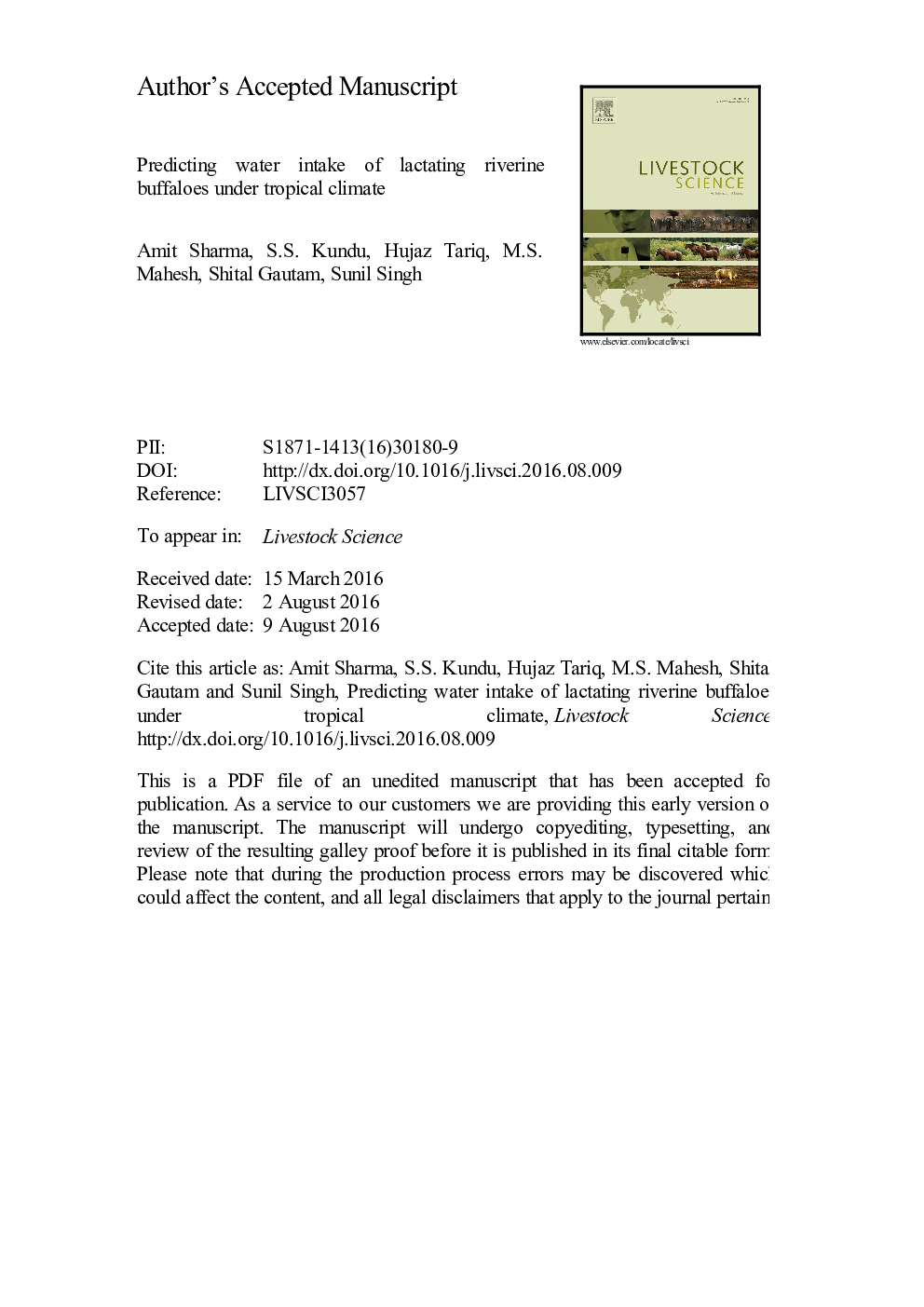| Article ID | Journal | Published Year | Pages | File Type |
|---|---|---|---|---|
| 5789938 | Livestock Science | 2016 | 15 Pages |
Abstract
The present investigation was carried out with the aim of determining water requirements of lactating Murrah buffaloes (Bubalus bubalis) under summer [August-September 2014 with maximum ambient temperature (Tmax): 32.7±0.7 °C, relative humidity (RH): 92.4±1.7%] and winter (December 2014 with Tmax: 15.1±0.9 °C, RH: 98.6±1.4%) seasons of tropical climate. Data on daily drinking water intake (DWI) were collected from 18 lactating Murrah buffaloes during summer [Average body weight (BW): 637±8 kg and milk yield (MY): 9.5±0.2 kg/d] and winter (BW: 626±10 kg and MY: 9.3±0.2 kg/d) seasons, separately. All animals were fed total mixed ration (TMR, 13.4% crude protein and 9.6 MJ/kg metabolisable energy) prepared from green maize forage, compounded concentrate mixture and wheat straw in 55:40:05 proportion (on dry basis). Daily DWI, dry matter (DM) intake (DMI) and MY were recorded along with environmental variables. The results revealed that DWI (L/d) and total water intake (TWI, L/d) of lactating buffaloes were higher (P<0.05) by 56.7% and 16.2% in summer than winter, whereas feed water intake (FWI, L/d) was higher (P<0.05) by 13.2% in winter than summer. Furthermore, the prediction equation indicated that, for each unit increase in MY, DMI, Tmax and DM% of TMR, the DWI (L/d) of lactating buffaloes was increased by 0.99, 1.44, 0.56 and 0.80 units, respectively. Whereas, unit increase in FWI (L/kg) caused 0.22 units decrease in DWI of lactating buffaloes. It was concluded that drinking water requirements of lactating Murrah buffaloes were influenced by the type of feed offered, DMI, level of milk production as well as environmental variables and therefore, it is recommended that the above equation can be used to predict water requirements of dairy buffaloes more robustly under tropical rearing systems.
Related Topics
Life Sciences
Agricultural and Biological Sciences
Animal Science and Zoology
Authors
Amit Sharma, S.S. Kundu, Hujaz Tariq, M.S. Mahesh, Shital Gautam, Sunil Singh,
